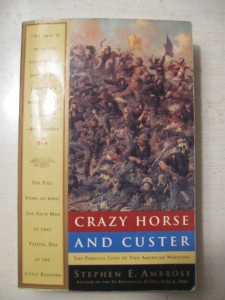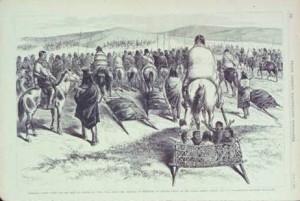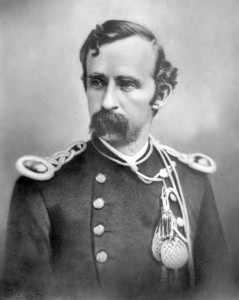Crazy Horse and Custer
The late Stephen Ambrose knocked historians for a loop with his fair and balanced book on Crazy Horse and Custer. He bills it as the parallel lives of Two American Warriors. I know that it was a great read and the renowned historian once again did an excellent job of getting the reader into the story. The story details the life and accounts of both Crazy Horse and Custer from birth to death. These two men became synonymous with the Indian Wars in the West. Ambrose recounts the tragedy suffered by the Indians at the hand of the Federal government, who seemed to never live up to the treaties it made with Indians, and how it fundamentally changed their way of life.
The story details the life and accounts of both Crazy Horse and Custer from birth to death. These two men became synonymous with the Indian Wars in the West. Ambrose recounts the tragedy suffered by the Indians at the hand of the Federal government, who seemed to never live up to the treaties it made with Indians, and how it fundamentally changed their way of life. I especially liked the depth he related from a military standpoint. While General Custer was celebrated as a General his wanton loss of men would have never been tolerated by an Indian leader. The disparity between acceptable losses for the resource heavy Federal government versus challenged Indians directly relates to why the Indians are on reservations.
I especially liked the depth he related from a military standpoint. While General Custer was celebrated as a General his wanton loss of men would have never been tolerated by an Indian leader. The disparity between acceptable losses for the resource heavy Federal government versus challenged Indians directly relates to why the Indians are on reservations.
The Indians have been relegated to the reservations as Ambrose recounts the Lakota understanding that the white man would keep coming as soon as they entered the sacred Black Hills they vowed to not enter. This was the last straw for Crazy Horse.
While Crazy Horse did not convert to the government camps until much later in life there were many that did. Ambrose tells us they would hang around the camp during the winter and join the “wild” Indians for hunting and war during the spring and summer. This seems to point to a trend in US history.
How many times have we supported a person, group, or country only to later wage war against them when they fall out of favor. Ambrose does an excellent job of recounting the success and failures as to what happened at the Little Bighorn.
I really liked his theories as to what might have been if the 600+ Federal soldiers did not run headstrong into an unbelievable collection of 3000+ Indians. It is explained how unusual that number of Indians uniting under the Oglala Sioux would have been. It is a testament to the bravery and leadership of Crazy Horse. Ambrose does a fantastic job of detailing Crazy Horse and Custer. I think it is an essential read for anyone that wants to read an accurate account of the Indians and Federal government during this time period in US history.
Ambrose does a fantastic job of detailing Crazy Horse and Custer. I think it is an essential read for anyone that wants to read an accurate account of the Indians and Federal government during this time period in US history.

Pingback: #1 reason the location of the Original Lost Colony is not known today